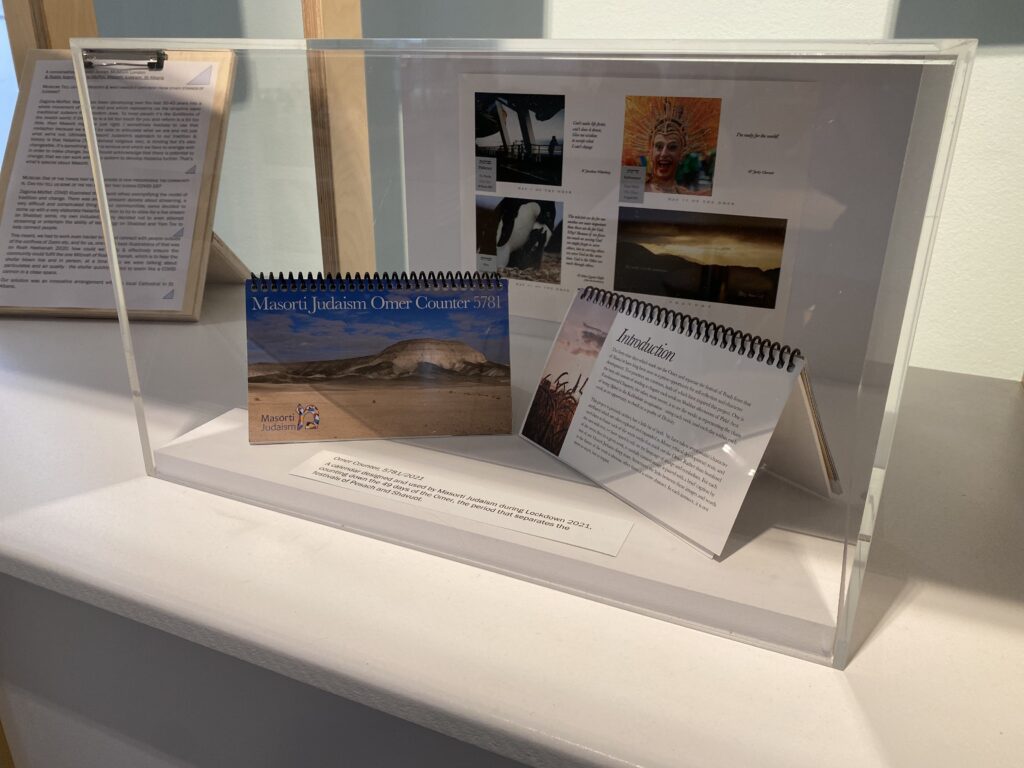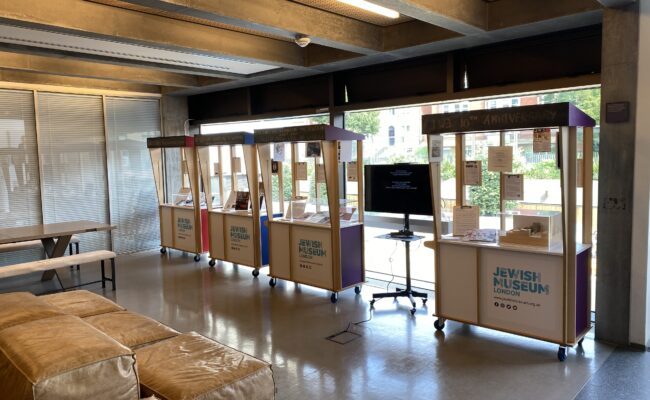A conversation between Jewish Museum London & Rabbi Adam Zagoria-Moffet, Masorti Judaism, St Albans

Museum: Tell us about Masorti & what makes it different from other strands of Judaism?
Zagoria-Moffet: Masorti has been developing over the last 30-40 years into a whole movement of its own and one which represents (as the strapline says) traditional Judaism from modern Jews. To most people it’s the Goldilocks of the Jewish world; if Orthodoxy is a bit too much for you and reform is a bit too little, then Masorti might be just right. I sometimes hesitate to use that metaphor because we should be able to articulate what we are and not just what we’re not. Ultimately, Masorti Judaism’s approach to our tradition & history is that Halakha (Torah derived religious law), is binding but it’s also changeable. It’s something which is serious and which we have to wrangle with in order to make change, but we should acknowledge that there is potential to change; that we can work within the system to develop Halakha further. That’s what’s special about Masorti.
Museum: One of the things that comes across is how progressive the community is. Can you tell us some of the you achieved that during COVID-19?
Zagoria-Moffet: COVID illustrated the Masorti ethos exemplifying the model of tradition and change. There was an ever-present debate about streaming, a very difficult and complicated thing for our communities; some decided to come up with a very elaborate Halachic solution to try to allow for a live stream on Shabbat; some, my own included, simply decided not to even attempt streaming or entertain the ability of technology on Shabbat and Yom Tov to help connect people.
This meant, we had to work even harder to try and connect with people outside of the confines of Zoom etc. and for us, one of the best illustrations of that was on Rosh Hashanah 2020; how could we safely & effectively ensure the community could fulfil the one Mitzvah of Rosh Hashanah, which is to hear the shofar blown live and in person, at a time when we were talking about particulates and air quality – the shofar quickly started to seem like a COVID cannon in a close space.
Our solution was an innovative arrangement with the local Cathedral in St Albans.
Museum: How did you go about celebrating Rosh Hashanah during the first year of Covid-19?
Zagoria-Moffet: The idea of blowing the shofar would have been quite terrifying. But we did something which I think was really cool; we worked with St Alban’s cathedral (aka ‘The Abbey’) and asked them if we could climb to the top of their medieval bell tower to blow the shofar. That way, people could gather together on the lawn below, hear the shofar being blown on Rosh Hashanah, and thus fulfil the mitzvah, in a safe way, and a way that really exemplifies how we interact with the community around us and how we deal with Halachic challenges.
The response was overwhelmingly positive. The Abbey was very excited to help us fulfil this mitzvah. They’ve always been very supportive. We had 4 of us with four different kinds of shofar, one on each side of the tower. I think 100-250 people sat below socially distanced and safe. For many people that was the first time they’d really been together, even if it was such a strange way, after a long period of lockdown. And it was fun; people on the street wearing kippah, (a rare sight in St. Albans), people travelling from London because they wanted to hear it.
I’m proud of the fact that we could find creative solutions to Halachic problems. It’s now become a routine. We did it again in 2021. We had a picnic instead of standing socially distanced in the cold, and I think it will be something we do every year.
Selecting an object
Museum: Let’s move on to the object that you’ve chosen to display for us, which I think is connected To COVID-19 too?
Zagoria-Moffet: Yes, we’ve chosen something that was also created to solve a problem during the pandemic and the problem was how do we connect with people over the period between Pesach and Shavuot? The period called the Omer where it’s usually an individual & family custom to simply count the day.
It’s a chance each day to stop and say, “today is the whatever day of the Omer.” Many people were largely relying on Jewish community via social media, online WhatsApp groups, and zoom sessions, so we came up with the idea of creating an Omer counter, printing it and distributing it to our different communities. This gave people the opportunity again, to fulfil the mitzvah, because that is our aim as a Halachic community, but to do it in an unusual and purposefully unorthodox way.
Our Omer counter that you can see here uses the Mussar of Jewish ethics – each week of the seven-week period of the Omer is represented by an ethical attribute from patience to generosity to piety. Each day within that week is represented by a somewhat arbitrarily selected image, mostly photographs, which were accompanied by a short quote written by one of our rabbis.
The assignment was 50 words or less, which for rabbis is a challenge. As you flip through the Omer counter each day, you would have an image to contemplate something that relates to the theme of the week and also some teaching from one of our rabbis.
To make this truly interactive, we also had a variety of WhatsApp groups that were being run in our different communities, where the image was posted each day, along with the quote and we’d encourage people to discuss it. We had a couple of thousand people at one point counting the Omer (though I’m not sure how many finished all 50 days…)
It’s quite a challenge, but it’s a lot easier to remember when you have a physical object in front of you, which you can prop up on your window sill and which says, today is this day of the Omer. Many people told us that the opportunity to just take a few minutes out of their day, to think about something of a spiritual nature, to discuss it with other people in different channels, and just to know that other people were doing the same, gave them a real sense of connection and community during a time when we were quite isolated.
—————————————————————————–
For more information visit: www.masorti.org.uk/
